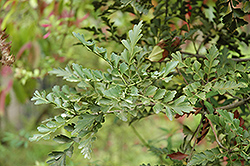Fri & Sat 8am - 8pm
Sun 8am - 7pm
Anytown, USA 12345
fax: 261.787.0463
e-mail: info@successgc.com


Plant Finder

Height: 40 feet
Spread: 30 feet
Sunlight:
![]()
![]()
Hardiness Zone: 9a
Other Names: Tanekaha
Description:
A small to medium size tree that can be maintained as a shrub; the leaves are sparse, tiny and scale like, photosynthesis is performed by modified, flattened, green leaf stems that mimic leaves, giving a ferny look akin to celery foliage
Ornamental Features
Celery Pine has brown-tipped rich green foliage on a tree with a pyramidal habit of growth. The tiny scale-like leaves remain green throughout the winter.
Landscape Attributes
Celery Pine is an evergreen tree with a strong central leader and a distinctive and refined pyramidal form. It lends an extremely fine and delicate texture to the landscape composition which can make it a great accent feature on this basis alone.
This is a relatively low maintenance tree, and can be pruned at anytime. It has no significant negative characteristics.
Celery Pine is recommended for the following landscape applications;
- Accent
- Vertical Accent
Planting & Growing
Celery Pine will grow to be about 40 feet tall at maturity, with a spread of 30 feet. It has a low canopy with a typical clearance of 3 feet from the ground, and should not be planted underneath power lines. It grows at a medium rate, and under ideal conditions can be expected to live for 50 years or more.
This tree does best in full sun to partial shade. It does best in average to evenly moist conditions, but will not tolerate standing water. It is not particular as to soil pH, but grows best in poor soils. It is somewhat tolerant of urban pollution. This species is not originally from North America.
